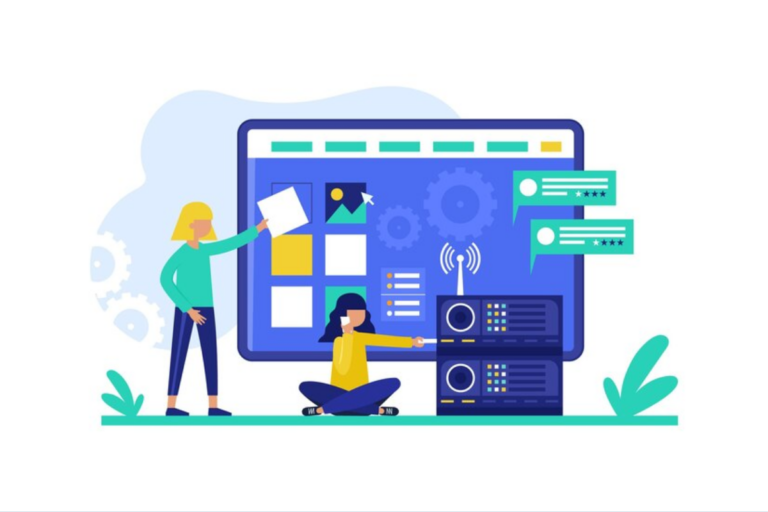As digital transformation accelerates, understanding the nuances of fintech development becomes crucial for anyone looking to innovate within the financial sector.
From mobile banking apps to blockchain-based payment systems, this guide aims to provide a thorough overview of the processes, technologies, and regulatory challenges involved in creating cutting-edge fintech solutions.
Whether you’re a startup founder, a software developer, or a financial professional, this guide will equip you with the knowledge needed to navigate the fast-evolving world of fintech software development.
As the demand for innovative financial solutions continues to grow, fintech software development services have become increasingly sought after by businesses aiming to stay ahead in the competitive financial sector.
What Is FinTech Software?
“Fintech” stands for any tech advancement in the finance sector, covering everything from banks and investment companies to insurance firms.

FinTech software — is the heart of the financial sector. All innovations in the sector start with FinTech software.
It is designed to bridge the gap between traditional financial services and the digital era, transforming the way people manage, invest, and spend their money.
FinTech software includes a variety of tools, such as mobile banking apps, crowdfunding platforms, cryptocurrency trading apps, and automated financial advisors.
These tools aim to make financial tasks easier, faster, and more efficient for everyone. The main goal of these applications are to simplify and improve the way we make financial decisions and transactions, ensuring a smooth experience for users.
Advantages Of Fintech Software
There are many benefits of adopting fintech software in various sectors including banking, insurance, payments, and investments.
Enhanced Customer Satisfaction
With user-friendly interfaces and smooth experiences, users can effortlessly engage with services with just a few clicks or taps.
The days of waiting in lengthy queues are over; transactions are conducted with transparency and efficiency, while support is typically immediate and digital.
Operational Efficiency
For example, robotic process automation (RPA) minimizes the need for human intervention by automating routine tasks.
This leads to faster decision-making in areas like loan underwriting and insurance claim processing, fundamentally streamlining operations.
Additionally, blockchain technology and smart contracts make payment reconciliation quicker and more accurate, addressing the challenge of transaction discrepancies, especially in cross-border payments, without compromising efficiency.
Personalization
Fintech solutions can analyze user data to offer personalized financial advice, tailored investment strategies, and customized product recommendations.
Enhanced Security
Leveraging advanced technologies like encryption and blockchain, fintech software offers improved security measures to protect users’ financial data and transactions.
FinTech software is reshaping the financial landscape by offering more efficient, secure, and user-friendly alternatives to conventional financial services, driving forward innovation in the global economy.
Key Features Of Fintech Software
There are the main components that make FinTech software more effective and user-friendly.

Data Analytics and Visualization
FinTech applications leverage data analytics to provide users with deep insights into their financial health.
By analyzing spending patterns, investment returns, and market trends, these platforms can offer personalized advice, forecast future financial scenarios, and help users make more informed decisions.
Enhanced data analytics also enable financial institutions to identify opportunities for product improvement and innovation.
User-Friendly Interface
This ensures that even users with minimal financial or technical knowledge can efficiently manage their finances, perform transactions, and access financial information without feeling overwhelmed.
Personalization
By analyzing individual financial data, these applications can tailor recommendations, notifications, and financial advice to suit each user’s unique needs and goals. From custom investment strategies to personalized budgeting advice.
Security
With the increasing threat of cyberattacks, security is paramount in fintech software.
These platforms employ state-of-the-art security measures such as end-to-end encryption, two-factor authentication (2FA), and biometric verification (fingerprint or facial recognition) to safeguard user data and transactions.
Regular security audits and compliance with global data protection regulations further ensure the integrity and confidentiality of financial information.
Automation
From automatic bill payments and savings transfers to portfolio rebalancing and tax calculations, automation helps users manage their finances more efficiently.
It not only saves time but also minimizes the risk of human error, making financial management a hassle-free experience.
Mobile Compatibility
It ensures that users can access their financial information, make transactions, and receive alerts on the go, providing unmatched convenience and flexibility.
Enhanced mobile features, such as mobile deposit and NFC payments, further enrich the user experience.
How To Develop Fintech Software
Developing fintech software is a complex process that requires a deep understanding of the financial industry, user needs, and regulatory landscape.

By following these steps, you can create a fintech solution that not only meets market demand but also offers a secure, efficient, and engaging experience for users.
Step 1. Selecting A Niche
It’s the initial and the most critical step. You need to choose a specific area within the broad spectrum of fintech offerings, which includes everything from payment and mobile banking applications to personal finance management, investment platforms, and peer-to-peer (P2P) lending services.
Step 2. Research The Market
This step requires you to explore the wants and needs of your target audience, grasp the current state of the market, and examine your competitors in detail.
Staying informed about the latest developments in the fintech sector can also provide you with a leg up on the competition and ensure your product is in tune with upcoming market trends.
Additionally, it’s important to check for any specific legal or regulatory requirements that apply to your selected niche.
Step 3. Design Process
The next step is to conceptualize those findings into the design of your software.
This involves creating wireframes to outline the layout of each screen and determine the necessary functionalities.
Focus on developing user-friendly interfaces that ensure seamless navigation and interaction for users.
This stage also involves the integration of data visualization elements, allowing users to quickly understand their financial status and information with ease.
Step 4. Software Development Phase
Adopting an agile development approach is beneficial here, as it supports continuous improvement through feedback after each development sprint. Choosing the right technology stack is crucial at this stage, weighing the merits of established technologies against cutting-edge ones that address new challenges in the financial sector.
Step 5. Launch and Some More Improvement
Launch your fintech software to the market. After launch, continuously monitor performance, gather user feedback, and make iterative improvements to add new features and enhance user experience.
Step 6. Compliance And Updates
Stay updated with changes in financial regulations and compliance standards. Regularly update your software to ensure ongoing compliance and address any emerging security threats.
Conclusion
As the fintech landscape continues to evolve, staying informed and adaptable to emerging trends and regulatory changes will be key to success.
Whether you’re embarking on developing a new fintech solution or looking to integrate fintech software into your business, this guide serves as a valuable resource for navigating the challenges and seizing the opportunities in the digital finance revolution.



